Horror is a genre that, when done well, gives us stories that can linger and haunt us even after we’ve closed the book or turned off the television. It makes us look at the world with new eyes, even if for a short period of time. Sometimes, it’s easy to try and classify horror as just needing a good monster, or a frightening atmosphere, or some great jump scares, but the most horrifying types of horror are much more complex than that.
While many considerations go into crafting a good horror experience, like whether the monster will defeat the protagonist or be defeated, or whether it will employ Lovecraftian or existential elements, we’ll be focusing on the most bare-boned reasons as to what makes a horror story linger and truly frighten us after the game is turned off.
Building Horror
One of the most important things a game or story can do when presenting a horror scenario is use something called the tension/release cycle. This conveniently-named tool requires a slow build of anticipation within the story, adding tension and, in laymen’s terms, stressing the player out. As this happens (if it’s done well), the player him/herself will begin to feed the tension, both wanting the break in tension/release and dreading what will happen to cause the release, thus adding more tension.
Again, assuming this is done well, this build up continues until you almost can’t take it anymore, and you feel like something just needs to happen, when
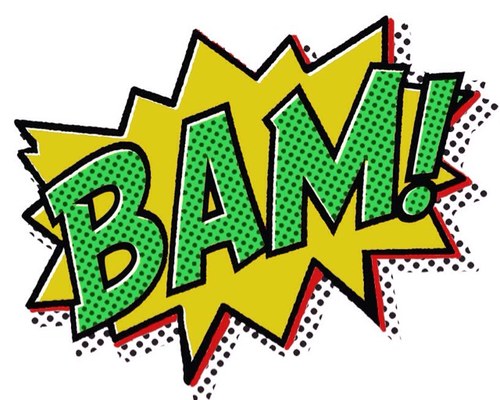
A loud noise blares, another character appears, the monster pops out, or a harmless cat jumps onto the windowsill (oh thank goodness, Pepper, it was just you…).
And then the cycle repeats.
But the thing about this is that after the release, we feel better. We actually feel less scared – after the initial startle passes – than the moment right before the release. This is how we can engage with horror media for hours at a time and not suffer any long-term stress effects: by utilizing the tension/release cycle, horror stories not only keep us right where they want us, but also offer small psychological releases so we don’t, you know, accidentally experience a brief psychotic break. No, seriously.

A game like Slender or even Gone Home do this well. As the player traverses the gamescape, we are acutely aware of the environment (because we are on alert for Slender Man or because of the uncanny, which we’ll talk about below), and are subconsciously counting the moments when… nothing happens. We know something is coming. We know it’s going to be scary, and yet we don’t know when it’s going to happen. While Slender Man is horrifying, it’s almost a relief when he shows up, because we can finally be properly scared, maybe scream, and run away (either in or out of game, whatever does it for you); we are able to get all of that nervous energy out. And what a relief when the monster finally shows up!

But where does this slow anticipation come from?
Uncovering Uncanny
A long, long time ago, I briefly dropped the term “uncanny valley” in a post about art, graphics, and games. InsertMemoryCard was the only person who commented on it, and while I had originally wanted to wax poetic about the uncanny valley in its own post, I was never happy with how it looked. But now we’re talking about horror, so the uncanny fits right in! But before we talk about the uncanny that is found in games, we need to establish what the “uncanny valley” is.
As humans, we are experts at determining what is human and what isn’t human. We know, without a doubt, what humans are and what they look like.

These are humans.

These are not humans.
I’m being serious. We do this without consciously thinking about it, without having to make calculations, without having to stop and reconsider.
We’re even really good at determining whether or not a humanoid-like thing is a human or not.
These are also not humans, even though they sort of look like they’re related in some way to humans.
Interestingly, we’re also good at picking out human-like features in things that are distinctly not human, and happily perceive them as more human-like.
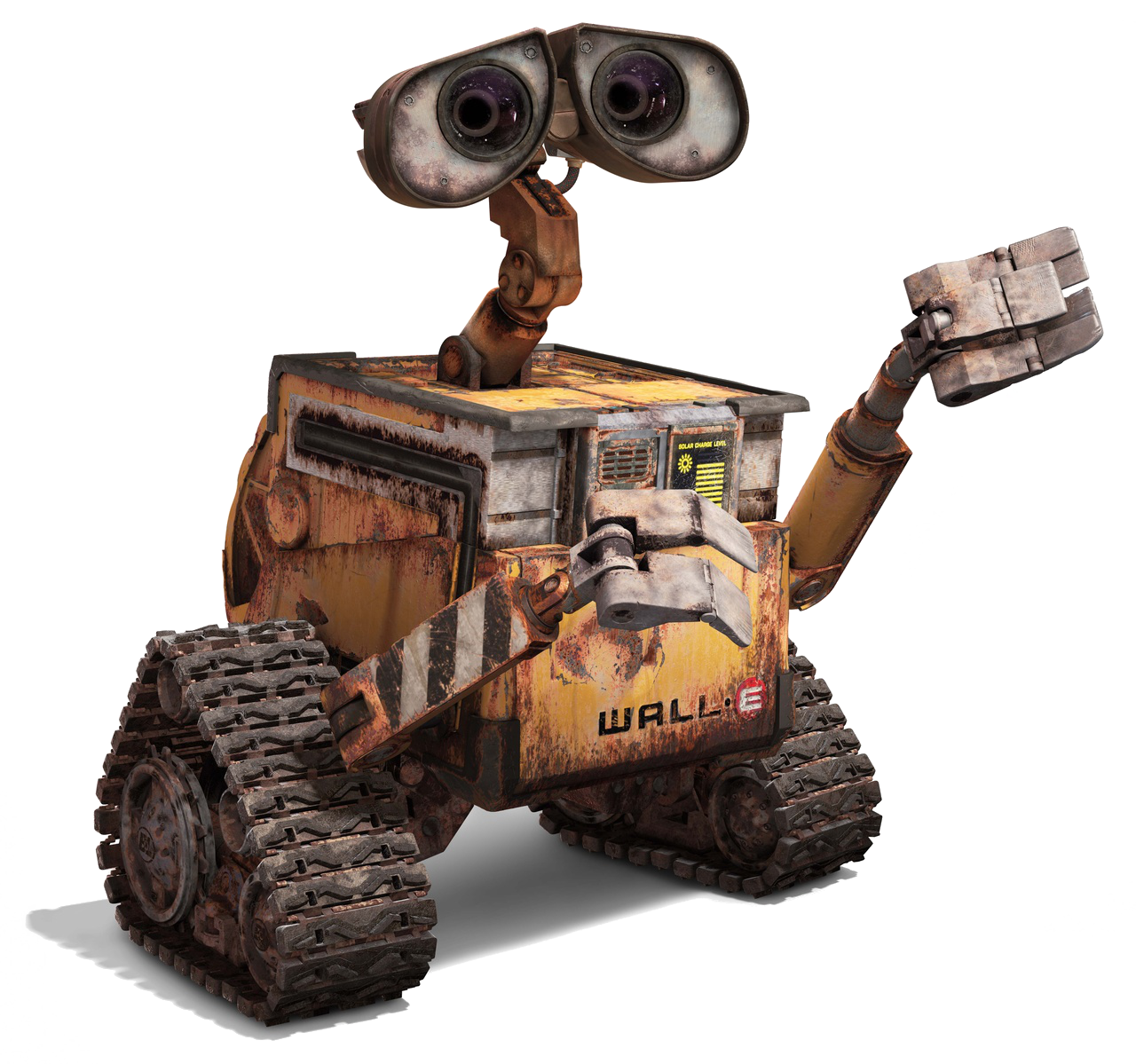
Aw, look at him and his little, expressive eyes! He thinks he’s a people!
In all of the above pictures, we are able to clearly distinguish what is human, and what is not, and that is comforting. We like categorizing things, especially regarding whether things are similar to us as a species, and we’re okay when things are clearly “human” or clearly “not human.” Additionally, the human characteristics in non-human Wall-E are discernible, but because the rest of him is so obviously “not human” (and classified as such), we’re okay with the human-like characteristics.
The problems begin when the human-like characteristics are on an object that looks human, but something is off about it.

Because we are so good at figuring out what is and isn’t human, we are quickly able to pick out the human characteristics, but on the heels of that is our brain realizing that there is something wrong about it. It’s because we’re so good at knowing what humans look like that the photo above bothers us.
We might not be able to put our finger on it, but something is wrong. It looks human, but it is, at the same time, not human. This also begins to explain the revulsion we feel at seeing dead bodies – they look human, but something is missing. Of course, from an evolutionary standpoint, being wary of the dead thing that looks human but isn’t alive anymore was advantageous for obvious hygienic reasons.
Thus, to warn us of potential danger of “not human,” our brains make us feel uneasy.
The “valley” that I’ve been talking about refers to the below graph, which shows how, as things look more human, the more we tend to like it… to a point. When things hit the “uncanny valley,” we are in the same situation as above: the “person” doesn’t exactly look right. On the other end of the valley is, of course, actual humans. Take a look:

So our friend up there tripped and fell into the valley, along with The Polar Express movie and other unfortunate characters from games like L.A. Noir and Medal of Honor.
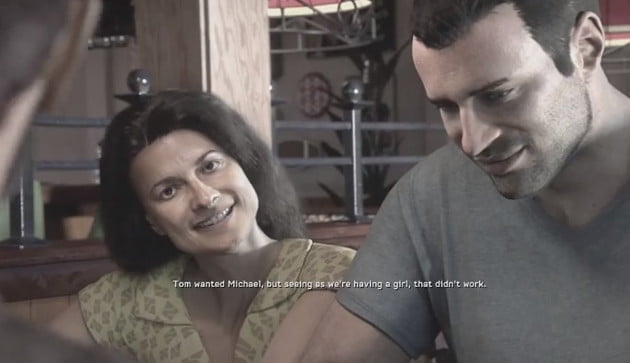
Unsettling Environments
But what does this have to do with horror? Sure, these pictures are creepy, but easily dismissed as bad animations.
Well, we’re not only good at discerning what is human and what is not human, but also at knowing the way things are “supposed” to look, and finding little things that aren’t the way they’re supposed to be. A flickering light in a house concerns us, because we know that lights aren’t supposed to flicker. Then, we make a logical leap and say that if a light is flickering, then it isn’t in good repair, perhaps because no one lives there. But if no one lives there, then why are the lights on to begin with? And if someone does live there, why haven’t they replaced the bulb?

So, when it comes to the uncanny, our own minds can be more frightening than anything else we’ll come across. At that point, we begin looking for more things that are out of place, heightening our alertness. If we do find something else out of place, then we become more concerned. And thus the tension/release cycle continues.
A good example of this is Gone Home, because while there is nothing objectively scary about the game, it sets the player on edge because so much just seems out of place, both physically and psychologically, in the home you are exploring. The story doesn’t have to work hard to creep the player out – the player’s own imagination builds the tension for it, and so the game only needs to worry about when it will provide the release.

Getting into the player’s head, however, is the surest way to create a horror experience that lingers, and one that will not be easily dismissed once the game is turned off. And if you can get a monster into the player’s head, well…*
Unsettling People
It’s comforting, isn’t it, to be able to think,” Whew, thank goodness things aren’t really like that“? Well, in the most effectively haunting tales, that last net of safety is taken away. These stories hold up a mirror and simply reflect back a horror that could be, that is not too far from our own realities, and/or shows us the depths to which a person can fall.

For this to work, the main character needs to be relatable. While some stories play up the power fantasy end of things, those tend to not be the games or stories that linger or have the most impact. We can understand how scared the Everyman protagonist might feel when thrown into situations out of their control, and some of the most powerful examples of using this is in comparing the movies Alien and Predator. Which is scarier? I’m willing to bet you answered Alien with poor, doomed, working-class Ripley, and not Predator with its badass Major Schaeffer who is anything but helpless.
But why is this? The best, most lingering types of horror are about disempowerment; they make us feel frightened even in a safe place. Unlike the jumpscares or the gross monsters of action-horror games, we can’t chuckle off how unsettling these games are. The complex relationship between the monster and the protagonist needs to be tipped in the monster’s favor in order for us to feel that hopeless horror that sticks with us.

One way to do this is to have the protagonist fail, usually right after looking like they would succeed. It leaves the audience unsettled, especially if they found themselves identifying with the character. In fact, it can at times call into question our very idea of self efficacy and free will; after all, if the character thought they had won, and had done everything right, or worse, simply were in the wrong place at the wrong time, and yet still failed, what could that mean for us?
Games like Eternal Darkness fall into this category, pitting us against a growing horror that slowly and meticulously defeats the protagonist one moment at a time. The game literally shows how the horror chips away at Ashley’s sanity, just as it would for any of us (let’s be real here).
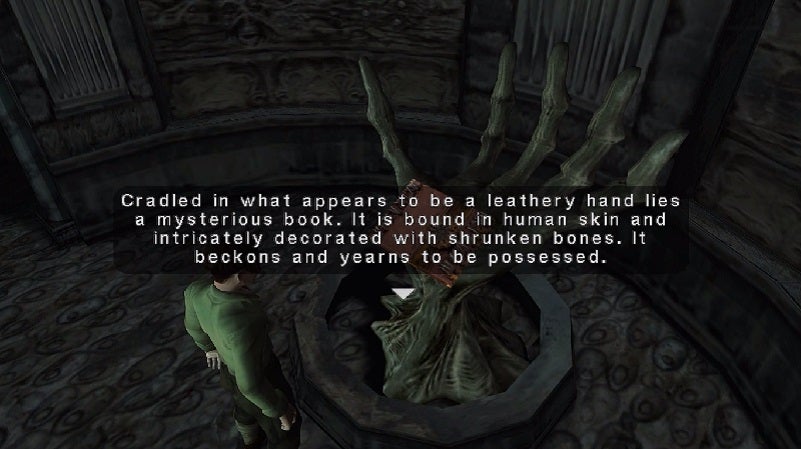
My favorite type of character, however, is when a story simply reflects back the darkness that hides just beneath the surface in all of us. One that shows us what could happen if we let out some of our more base desires that are only held back by a veneer of socialization. You know, those horrible little ideas that pop into your head for a moment because you think, “How terrible,” and dismiss it.
Horror protagonists take those ideas, or those feelings, and pull them into reality. Showing the depths to which humans can fall challenges our expectations that “hero” of a tale is heroic. In this cases, the hero falls to some other force, sometimes very unknowingly, and instead of being the unwavering hero we want them to be, wind up being the villain in their own story.

As the hero in our own stories, though, what does that say about what could happen to us?
Too Long; Didn’t Read
At the end of the day, there are many different kinds of horror, many different ways to present monsters, and many different ways for horror protagonists to be portrayed. But to make the horror linger, to rattle the audience, and to blur the line between what happens behind the screen and what happens in front of it, showing the potential depth to which the gamer could easily fall by presenting them with a relatable, realistic character who is, themselves, the monster in their own story is more effective than any other means of horror-building.
What do you think? Do you prefer your horror unsettling and uncanny, or empowering and easily dismissed? What’s your favorite horror game? Did it have any of the elements listed above? Let me know in the comments!
Thanks for stopping by, and I’ll see you soon!
~ Athena
**Extra content available on this topic on Patreon!**
What’s next? You can like, subscribe, and support if you like what you’ve seen!
– Support us on Patreon, become a revered Aegis of AmbiGaming, and access extra content!
– Say hello on Facebook, Twitter, and even Google+!
– Check out our Let’s Plays if you’re really adventurous!
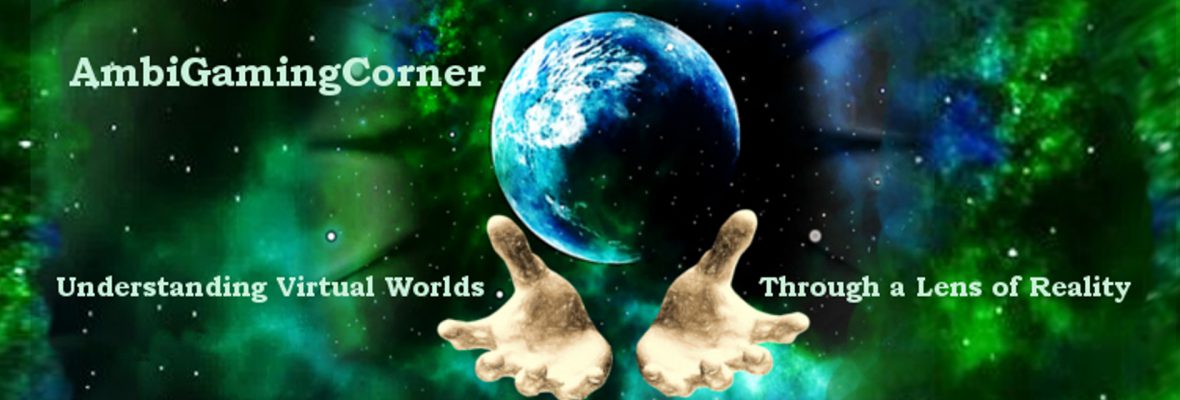

If somebody had an SNES in 1995 without a cartridge inside, I wouldn’t know what to tell them.
A lot of people have described games like Resident Evil 4 and The Last of Us as horrific, but I didn’t find them scary at all. Even if the firepower in the latter is limited, having an impressive arsenal means you can respond to the threats with a quick, permanent solution. The only times you can’t are when the plot says no, but that’s hardly unfamiliar territory for Naughty Dog games, so it’s hard to distinguish that variety of helplessness from the kind that permeates throughout the rest of their canon.
I feel a game is scary when it’s not acting the way it’s supposed to (whether this was intentional or not). At that point, your otherwise complete control over the game is being undermined, and that’s not a feeling that can be replicated in other mediums.
LikeLiked by 1 person
Right? That’s pretty horrifying right there.
I think there’s a difference between unsettling and truly horrifying, especially if the protagonist is very powerful. In that case, the game starts to feel more like a power fantasy than a horror game, in my opinion, like you alluded to.
I wholeheartedly agree that the scariest games are the ones that aren’t *quite right* and make the best use of the uncanny, while stripping the player of understanding/control, because you’re right – since it’s experienced by the player, it can be a much different experience than can be provided by other media.
LikeLiked by 1 person
Inexcusable!
Yeah, at that point, they’re just being slightly dreary third-person shooters. I can say it worked out in the case of Resident Evil 4 at least.
Considering that the player is always an active participant in a game’s story (whether or not they’re acknowledged as such by the developers), I’d say the horror genre was tailor-made for video games.
LikeLiked by 1 person
Thinking back, I always found Project Zero/Fatal Frame pretty scary. I think that a lot of that was a combiantion of atmosphere and the feeling that you’re playing as someone who unprepared for the trials ahead. Alien isolation also scared me. To the point that i once spent half an hour fo game time hiding and not moving (in the game) because I was too scared to come out. When I did eventually come out, I repeatedly fluffed an easy puzzle because I was shaking and nervous. Great stuff, that.
Horror games are like horror films for me though. There are some good examples of things that really in your face, but it’s the atmosphere that gets me more than anything. Don’t overdo what you’re shown, just leave me unsure what it is that’s off, and worrying about when i’m going to realise what it is.
LikeLiked by 2 people
I had to look up where the thumbnail/before-the-cut image came from, and I have to say I’ve got half a mind to play Hellblade…the other half is hell bent on no, please, especially after seeing that picture. Seriously though, after reading all the comments about it here and the reviews of the game I am sure I’ll play it soon, during daylight and with my dog by my side.
That is very interesting about tension/release. I will hazard a guess and say that may be the reason I find horror stories/games/movies with few to none “jumpscares” a little harder to endure. After all, if the serial killer is right in front of the POV character, then they can safely run the other way (unless there is another killer hidin *gulp*).
The one thing that always gets me when it comes to the uncanny valley are (supposed) humans with non-human movements, stuff like that Medal of Honor lady’s neck and every possessed person ever.
I don’t think I have played enough horror games, but I like games (and other media) that have disempowered characters with empowering endings. I suppose it is something that comes from growing up at a time when most horror movies (and many horror games) ended with the main character or characters almost reaching safety, almost winning, almost defeating evil. It became such a staple of horror that it no longer shocked or unsettled.
LikeLiked by 1 person
Do it do it do it do it It’s so good!!!
Yes, the “release” aspect of the tension/release cycle is sort of important, otherwise that tension just keeps getting worse, doesn’t it??
Movement discrepancies are definitely pretty obvious indicators, especially since our brains can pick up things called “micromovements” in facial expressions, which are not captured well in robots and some CGI animations, giving them a stilted look. Eyes can also fall prey to this, especially since they can have their own brand of “lifelessness.”
I think a lot of people like that kind of horror, which usually plays into the power fantasy of many current horror games. The other types of horror (i.e., the monster triumphing) is supposed to starkly show that, at the end of the day, we aren’t in control of our destiny, but I an see how that can become overdone and stereotypical after a while.
LikeLiked by 1 person
Will do. Everyone keeps talking about the care that went into making it, and it has a lot of things of interest to me, namely a female main character, Celts and Vikings.
I guess it comes down to not overdoing either extreme. Actually, that is one of the great things about games with multiple endings and/or points of view. They illustrate the point about choice, destiny and control better than games with just the one outcome.
LikeLiked by 1 person
I’m more on the unsettling side of scary, with jump scares and the like not really doing it for me. I want a build up in my mind of the scary thing. Games for the most part have not really hit squarely on scary for me like some movies have. Amnesia The Dark Descent got pretty close though
LikeLiked by 1 person
*D’awws at picture of cute puppies for several minutes*
Where was I.. oh right. This was a fantastic read! Honestly, I never truly understood what the “uncanny valley” thingy was until you just explained it perfectly, so thanks. 😀 A bit unrelated to the post, but since I saw him on the graph, Homer Simpson is ever-so slightly more important to me than Lightning Farron is… that should say a lot, haha.
Back on topic: I’m not big on horror in media, but there are a few exceptions. It’s better for my emotional wellbeing when it’s empowering and easily dismissed. The unsettling and uncanny variety usually sets me off on existential crises, but definitely stays with me more, if that makes sense. For example, The Last of Us disturbed me greatly. The fungus that created the monsters is based off an actual one that controls and kills ants in the real world. That thought train led me to question the very nature of thought, freewill, and “who” we are as individuals. Very unsettling! Also, the scene near the end really, really got to me for personal reasons. But after reeling from it for a few days, it actually helped me settle an issue that had been bothering me for a long time.
Now that I think about it, Hellblade is fitting into the easily dismissed category for me so far. As you know, I’m not very far into it so that may change when I see more scary/horrific stuff.
LikeLiked by 1 person
Glad you liked the uncanny valley explanation!
Horror that lingers and makes it seem like it could touch our lives on the “other side” of the TV is certainly the most potent, in my opinion, especially when it shows the darkness that humans can create or become.
I’d be interested to hear your thoughts when you finish Hellblade. Just remember that everything happening to Senua is real…
LikeLiked by 1 person
Reblogged this on DDOCentral.
LikeLiked by 1 person
definitely prefer the unsettling, uncanny type of horror. I find things like jump scares cheap and kind of give me a bad taste. I’m not one who’s big into horror though, simply because i’m a scaredy cat, but for the few times i’ve dabbled, i can safely say this.
my favourite “horror” game, but i wouldn’t call it horror would be Hellblade. It has elements of a horror game that made me quite frightened at how Senua portrayed things around her and how she struggled with the fears associated with each. It was far from jump scare horror which i liked, and the game really portrayed the protagonists fear convincingly that i myself felt the same way and all sorts of things like self doubt and fear just kept racing through my mind.
LikeLiked by 1 person
Yes, I wholeheartedly agree!
Hellblade is officially my favorite horror game (and it’s classified as psychological horror, so I’m going to go with it! haha). I really liked the ideas of the most horrifying things being the ones that are in your mind, like you alluded to. And the fact that *that’s* reality – as it’s Senua’s reality – is truly terrifying.
LikeLiked by 1 person
I like unsettling horror that also dabbles in fear of the unknown, like Fatal Frame and Silent Hill. I like games that make me stare down a room and say “nope,” rather than a game that forces me to ignore the surroundings and just run for dear life or mow down hordes of baddies with guns. Jumpscares are cheap and I’m not a fan of the ride and hide approach so many modern horror games fall under, but I did really enjoy Clock Tower, Claire, SOMA, and Detention, which are very similar.
LikeLiked by 1 person
I’d definitely agree with this. I prefer the unsettling types of stories that hint at things in the real world not being what they seem, either. Horror that lingers is the best (cough worst?) type of horror!
The power fantasy aspect certainly takes away from the experience, in my opinion, and jumpscares are… yeah cheap is a really good word for it.
SOMA is such an interesting game! Even though it does rely on some familiar actions, the story is so intriguing that it seemed to really work around any potential shortcomings.
LikeLiked by 1 person
I felt the same about Stories Untold (where the story told was executed in such an interesting manner that its shortcomings were virtually unnoticeable). Detention as well.
LikeLiked by 1 person
I’ve mentioned this around these parts, but I just don’t ‘get’ horror anymore. And I really don’t know why that is. I like the stories of a lot of horror games, but I don’t really get scared or unsettled by them. I don’t get wound up by the tension-inducing “omg omg omg it’s gonna find me” business, don’t really get disturbed by the monsters, it just falls flat for me. And I really wish that wasn’t so. I used to love my horror games. But I just don’t get that brief sense of safe danger from them anymore.
And oddly enough, that’s been meaning that a lot of the gameplay habits they use backfires with me, ends up making me like them less as games. Slow pacing, deliberately clumsy controls, the weird and nonsensical puzzle-solving, all tools that they use to build tension, threat, and atmosphere, but things that I just don’t get so it just feels like I’m playing a bad game.
I still find horror fascinating, though. A genre where the goal is to effectively stress people out doesn’t seem like it should work, but it does, and folks keep coming back to it.
LikeLiked by 1 person
I’ve noticed some horror games tend to fall into the “power fantasy” end of things, so they rely less on scaring the player and more on setting up a situation for the player to feel triumphant, which isn’t very frightening at all.
Personally, I like the “disturbing” sort of horror, more than the terrifying kind. That seems to stick with me a little more; I’m thinking of Hellblade off the top of my head because I just finished it, but the premise of the story is… disturbing in its own way, and certainly made an impression on me. It’s hard to do horror well, though, especially because at the end of the day the gamer always knows that everything on the screen is fake and not really going to affect them outside of the game.
You’re right! The fact that frightening people is a big business certainly says something, doesn’t it? I guess we overall do like to experience and process through those negative emotions when they’re presented to us in a safe way…
LikeLiked by 1 person
I love the uncanny valley paradigm. It’s just…fascinating to me. I read some interesting theories about how it not only ties in with why we find zombies terrifying (the dead, rotting corpse thing you mentioned), but also racism 😱 I know, right? There’s much less excuse for it now because of globalization, but if you’re used to people looking a certain way and then you see a person who has different skin color and features, the disease filtering circuits in your brain might kick in (and in some cases such as with Native Americans and Europeans, you wouldn’t be off), and warn you away. This was just a theory about the origin, but the uncanny valley does appear to be a safeguard mechanism, vestigial as it is now.
One of my favorite examples of it actually surprises me with how it works. If you want to show someone is evil, give them cat eyes. Sephiroth is my favorite character, but his kitty cat eyes give me the uncanny valley feeling, because you have this beautiful face with slit pupils. It’s…off, and a technique used pretty often to indicate evil. One of the reasons I like subverting it 😋
I like my horror psychological and/or Lovecraftian. Favorite horror gane is SOMA, but my favorite horror movie is Sweeney Todd because hotrod musicals are fantastic!
LikeLiked by 1 person
I much prefer the unsettling humor, bonus if it it’s psychological. Though to be honest, I don’t like scary games much or any scary media for that matter. But I do think anticipation is scarier than when it actually happens. Eternal Darkness is an interesting case for this. I like the unsettling nature of every sanity effect and fear of what’s to come in the game. And it ended up being one of the few scary games I’ve enjoyed. But there’s one problem: this little jump scare that happens in chapter 2 with a bathtub horror scene and a loud scream. It freaked me out way too much to the point where I could never replay that game; not because of the creepy effects but because I didn’t want to experience that jump scare again. Knowing that it’s there turns me off the whole experience. Worst inclusion in an otherwise masterful game.
LikeLiked by 1 person
Yeah horror is a tough sell for me, too, but I do prefer the psychological kind over the gory kind. And by prefer I mean I won’t sleep for days haha.
I really loved the idea of the sanity meter, for the reasons you mentioned. And I know exactly what scene you’re talking about. My experience of this game is via a let’s play (since I was too scared to play it for myself haha), but yes, in my humble little opinion it had no place in the game and was a bit of a cheap shot…. Oh well. Otherwise, yes, it was a fantastically done horro game!
LikeLiked by 1 person
Same here. Those are the ones that scare me, much more than an in-your-face jump scare horror does. Though to be fair, I don’t play many jump scare horror games. I just don’t like getting scared like that!
LikeLiked by 1 person
So well written and completely accurate. I’m so glad you referenced Eternal Darkness, that’s one of the creepiest games I’ve ever played and I still think about it a lot and fondly.
LikeLiked by 1 person
Thank you so much! Yes, it’s a great game, isn’t it? And such a wonderful example of horror 🙂 Thanks for your comment, and I hope to see you around again!
LikeLiked by 1 person
Wow, this was a really insightful read! I’ve heard of the uncanny valley in passing, but to read exactly what it’s about, that was awesome.
Parasite Eve is a favourite of mine, it really creeped me out. The hospital area made me feel really tense – I had no idea what was coming next and I had to put down the game for a few moments when I saw the final boss for the first time. That freaky baby gave me nightmares for weeks…
LikeLiked by 1 person
Thank you! I’m glad you liked the description! It’s really a powerful psychological construct.
I’ve heard of that, but I don’t think I’ve ever played/watched it. Although for some reason the “freaky baby” description seems to be tugging at my memory a bit… Either way, if it has a hospital section, then right there I know it must have been very frightening!
LikeLiked by 1 person
You should check it out! It’s actually a pretty good game!
LikeLiked by 1 person
I once ran a session of Dread (tabletop RPG that uses Jenga blocks) where the monsters never showed up for 80% of the game. My student-players were so on edge, they had to take breaks to calm down. The imagination is its own worst enemy.
LikeLiked by 1 person
The imagination and anticipation of the “what if” is definitely worse than the actual “release” after the monster reveal! I can definitely see how, with just tension building, your students would need breaks.
LikeLiked by 1 person